Comparative Study of Cement Composites Reinforced with Cellulose and Lignocellulose Fibers
Abstract
1. Introduction
2. Materials and Methods
2.1. Materials
2.2. Mix Design
2.3. Mixing, Casting, and Curing
2.4. Testing
2.4.1. Density
2.4.2. Water Absorption
2.4.3. Compressive Strength Testing
2.4.4. Microscopic Surface Analysis
3. Results
3.1. Density
3.2. Water Absorption
3.3. Compressive Strength
3.4. Auxiliary Methods
4. Discussion
5. Conclusions
- The use of both cellulose and lignocellulose fiber pulps in cement composites, when added at higher dosages, does not allow for producing materials with properties comparable to conventional concrete of equivalent composition, with the high lignin content of lignocellulose further amplifying these limitations.
- Replacing ≥1.5% of mineral aggregates with cellulose pulp led to a ~10–20% reduction in compressive strength (depending on dosage), whereas for lignocellulose pulp the reduction already exceeded ~25% at ≥0.5%. At 3% lignocellulose, the maximum strength loss reached ~80%.
- In terms of water absorption, both fiber types caused a marked increase relative to the reference mix, reaching up to 14% for cellulose fibers and 5.5% for lignocellulose fibers. This significantly elevated moisture uptake limits the potential use of these composites in applications where low water absorption and long-term durability are essential.
- The reduction in mechanical properties can be attributed to the disruption of matrix cohesion caused by the presence of long, unmodified fibers. An interesting avenue for future research involves the use of shorter fibers such as those derived from recycled paper or subjecting the raw pulp to additional processing in order to reduce fiber length. This could result in improved dispersion, better bonding, and a more uniform internal structure of the composite;
- The findings of this study indicate that, while industrially sourced fiber pulps can be incorporated into cement composites, their use, particularly without treatment, introduces significant performance limitations, with high lignin content in lignocellulose pulp further intensifying these effects, highlighting the need for material processing and design optimization.
Author Contributions
Funding
Data Availability Statement
Conflicts of Interest
Abbreviations
| SCMs | Supplementary Cementitious Materials |
| MDF | Medium-Density Fiberboard |
References
- Barbhuiya, S.; Kanavaris, F.; Das, B.B.; Idrees, M. Decarbonising Cement and Concrete Production: Strategies, Challenges and Pathways for Sustainable Development. J. Build. Eng. 2024, 86, 108861. [Google Scholar] [CrossRef]
- Barbhuiya, S.; Bhusan Das, B.; Adak, D. Roadmap to a Net-Zero Carbon Cement Sector: Strategies, Innovations and Policy Imperatives. J. Environ. Manag. 2024, 359, 121052. [Google Scholar] [CrossRef]
- Cheng, D.; Reiner, D.M.; Yang, F.; Cui, C.; Meng, J.; Shan, Y.; Liu, Y.; Tao, S.; Guan, D. Projecting Future Carbon Emissions from Cement Production in Developing Countries. Nat. Commun. 2023, 14, 8213. [Google Scholar] [CrossRef]
- GCCA (Global Cement and Concrete Association). Concrete Future. The GCCA 2050 Cement and Concrete Industry Roadmap for Net Zero Concrete. Available online: https://gccassociation.org/concretefuture/ (accessed on 5 July 2025).
- Samad, S.; Shah, A. Role of Binary Cement Including Supplementary Cementitious Material (SCM), in Production of Environmentally Sustainable Concrete: A Critical Review. Int. J. Sustain. Built Environ. 2017, 6, 663–674. [Google Scholar] [CrossRef]
- Ho, L.S.; Van Quang, L.; Van-Pham, D.-T.; Huynh, T.-P. Strength Development and Microstructural Characterization of Eco-Cement Paste with High-Volume Fly Ash. Results Eng. 2025, 26, 105013. [Google Scholar] [CrossRef]
- Zhang, R.; Scott, A.N.; Panesar, D.K. Carbonation and CO2 Reabsorption of Cement-Based Materials: Influence of Limestone Filler and Ground-Granulated Blast-Furnace Slag. Constr. Build. Mater. 2024, 416, 135166. [Google Scholar] [CrossRef]
- Chen, J.; Plank, J. Calcined Clays for Climate Neutral (“Net Zero”) Cements: Shear-Dependent Rheological Behavior and Application Performance. Cem. Concr. Compos. 2025, 162, 106145. [Google Scholar] [CrossRef]
- Shah, I.H.; Miller, S.A.; Jiang, D.; Myers, R.J. Cement Substitution with Secondary Materials Can Reduce Annual Global CO2 Emissions by up to 1.3 Gigatons. Nat. Commun. 2022, 13, 5758. [Google Scholar] [CrossRef] [PubMed]
- Ma, X.; Hu, H.; Luo, Y.; Yao, W.; Wei, Y.; She, A. A Carbon Footprint Assessment for Usage of Recycled Aggregate and Supplementary Cementitious Materials for Sustainable Concrete: A Life-Cycle Perspective in China. J. Clean. Prod. 2025, 490, 144772. [Google Scholar] [CrossRef]
- Khankhaje, E.; Jang, H.; Kim, J.; Rafieizonooz, M. Utilizing Rice Husk Ash as Cement Replacement in Pervious Concrete: A Review. Dev. Built Environ. 2025, 22, 100675. [Google Scholar] [CrossRef]
- Farooqi, M.U.; Ali, M. Durability Evaluation of Wheat Straw Reinforced Concrete for Sustainable Structures. J. Build. Eng. 2024, 82, 108400. [Google Scholar] [CrossRef]
- Ahmad, M.R.; Chen, B.; Haque, M.A.; Kazmi, S.M.S.; Munir, M.J. Development of Plant-Concrete Composites Containing Pretreated Corn Stalk Bio-Aggregates and Different Type of Binders. Cem. Concr. Compos. 2021, 121, 104054. [Google Scholar] [CrossRef]
- Özkan, İ.G.M.; Aldemir, K.; Alhasan, O.; Benli, A.; Bayraktar, O.Y.; Yılmazoğlu, M.U.; Kaplan, G. Investigation on the Sustainable Use of Different Sizes of Sawdust Aggregates in Eco-Friendly Foam Concretes: Physico-Mechanical, Thermal Insulation and Durability Characteristics. Constr. Build. Mater. 2024, 438, 137100. [Google Scholar] [CrossRef]
- Dias, S.; Tadeu, A.; Almeida, J.; Humbert, P.; António, J.; de Brito, J.; Pinhão, P. Physical, Mechanical, and Durability Properties of Concrete Containing Wood Chips and Sawdust: An Experimental Approach. Buildings 2022, 12, 1277. [Google Scholar] [CrossRef]
- Maier, D.; Manea, D.L.; Tămaș-Gavrea, D.-R.; Țiriac, A.; Costin, P. Wood–Cement Composites: A Sustainable Approach for Mitigating Environmental Impact in Construction. J. Compos. Sci. 2024, 8, 474. [Google Scholar] [CrossRef]
- Abdalla, J.A.; Thomas, B.S.; Hawileh, R.A. Use of Hemp, Kenaf and Bamboo Natural Fiber in Cement-Based Concrete. Int. Conf. Adv. Constr. Mater. Struct. 2022, 65, 2070–2072. [Google Scholar] [CrossRef]
- Rahimi, M.; Omran, A.; Tagnit-Hamou, A. Role of Homogenization and Surface Treatment of Flax Fiber on Performance of Cement-Based Composites. Clean. Mater. 2022, 3, 100037. [Google Scholar] [CrossRef]
- Li, Z.; Guo, T.; Chen, Y.; Yang, W.; Wang, J.; Jin, L. Preparation and Properties of Pretreated Jute Fiber Cement-Based Composites. Ind. Crops Prod. 2024, 210, 118090. [Google Scholar] [CrossRef]
- Xu, R.; He, T.; Da, Y.; Liu, Y.; Li, J.; Chen, C. Utilizing Wood Fiber Produced with Wood Waste to Reinforce Autoclaved Aerated Concrete. Constr. Build. Mater. 2019, 208, 242–249. [Google Scholar] [CrossRef]
- Zaid, O.; Al-Dala’ien, R.N.; Arbili, M.M.; Alashker, Y. Optimizing Natural Fiber Content and Types for Enhanced Strength and Long-Term Durability in High-Performance Concrete. Clean. Eng. Technol. 2025, 26, 100983. [Google Scholar] [CrossRef]
- Ahmad, J.; Zhou, Z. Mechanical Properties of Natural as Well as Synthetic Fiber Reinforced Concrete: A Review. Constr. Build. Mater. 2022, 333, 127353. [Google Scholar] [CrossRef]
- Haile, A.; Gelebo, G.G.; Tesfaye, T.; Mengie, W.; Mebrate, M.A.; Abuhay, A.; Limeneh, D.Y. Pulp and Paper Mill Wastes: Utilizations and Prospects for High Value-Added Biomaterials. Bioresour. Bioprocess. 2021, 8, 35. [Google Scholar] [CrossRef]
- Kircher, M.; Aranda, E.; Athanasios, P.; Radojcic-Rednovnikov, I.; Romantschuk, M.; Ryberg, M.; Schock, G.; Shilev, S.; Stanescu, M.D.; Stankeviciute, J.; et al. Treatment and Valorization of Bio-Waste in the EU. EFB Bioecon. J. 2023, 3, 100051. [Google Scholar] [CrossRef]
- Zbieć, M.; Franc-Dąbrowska, J.; Drejerska, N. Wood Waste Management in Europe through the Lens of the Circular Bioeconomy. Energies 2022, 15, 4352. [Google Scholar] [CrossRef]
- Bittner, C.M.; Oettel, V. Fiber Reinforced Concrete with Natural Plant Fibers—Investigations on the Application of Bamboo Fibers in Ultra-High Performance Concrete. Sustainability 2022, 14, 12011. [Google Scholar] [CrossRef]
- Xu, N.; Qian, Y. Effects of Fiber Volume Fraction, Fiber Length, Water-Binder Ratio, and Nanoclay Addition on the 3D Printability of Strain-Hardening Cementitious Composites (SHCC). Cem. Concr. Compos. 2023, 139, 105066. [Google Scholar] [CrossRef]
- Choi, Y.C. Hydration and Internal Curing Properties of Plant-Based Natural Fiber-Reinforced Cement Composites. Case Stud. Constr. Mater. 2022, 17, e01690. [Google Scholar]
- PN-EN 197-1:2012; Cement—Part 1: Composition, Specifications and Conformity Criteria for Common Cements. Polish Committee for Standardization (PKN): Warsaw, Poland, 2012.
- Portland slag cement. Cementownia Warta, S.A. Available online: https://www.wartasa.com.pl/products/cement-portlandzki-zuzlowy-en-197-1-cem-ii-a-s-425-n-2/ (accessed on 5 July 2025).
- ISO 638-1:2004; Paper, Board and Pulps—Determination of Dry Matter Content—Part 1: Oven-Drying Method (Laboratory Procedure). International Organization for Standardization: Geneva, Switzerland, 2004.
- ISO 16065-2:2014; Pulps—Determination of Fibre Length by Automated Optical Analysis—Part 2: Automated Optical Method. International Organization for Standardization: Geneva, Switzerland, 2014.
- ISO 5351:2010; Pulps—Determination of Limiting Viscosity Number in Cupri-Ethylenediamine (CED) Solution. International Organization for Standardization: Geneva, Switzerland, 2010.
- TAPPI T 203 cm-99; Alpha-, Beta- and Gamma-Cellulose in Pulp. Technical Association of the Pulp and Paper Industry (TAPPI): Peachtree Corners, GA, USA, 1999.
- TAPPI T 222 om-02; Acid-Insoluble Lignin in Wood and Pulp. Technical Association of the Pulp and Paper Industry (TAPPI): Peachtree Corners, GA, USA, 2002.
- TAPPI T 204 cm-97; Solvent Extractives of Wood and Pulp. Technical Association of the Pulp and Paper Industry (TAPPI): Peachtree Corners, GA, USA, 1997.
- TAPPI T 211 om-02; Ash in Wood, Pulp, Paper and Paperboard: Combustion at 525 °C. Technical Association of the Pulp and Paper Industry (TAPPI): Peachtree Corners, GA, USA, 2002.
- PN-EN 13791:2019-07; Assessment of In-situ Compressive Strength in Structures and Precast Concrete Components. Polish Committee for Standardization (PKN): Warsaw, Poland, 2019.
- Raabe, J.; Wisky Silva, D.; Del Menezzi, C.H.S.; Tonoli, G.H.D. Impact of Nanosilica Deposited on Cellulose Pulp Fibers Surface on Hydration and Fiber-Cement Compressive Strength. Constr. Build. Mater. 2022, 326, 126847. [Google Scholar] [CrossRef]
- Lin, C.; Luo, Q.; Kanstad, T.; Grammatikos, S.; Ji, G. A Comprehensive Study on the Physico-Mechanical Properties of a Sustainable Mortar Reinforced by Waste Wood Fiber. Constr. Build. Mater. 2025, 461, 139928. [Google Scholar] [CrossRef]
- Yang, Y.; Li, X. Study on Compatibility of Poplar Wood and Portland Cement. Constr. Build. Mater. 2022, 314, 125586. [Google Scholar] [CrossRef]
- Mohammed, M.; Oleiwi, J.K.; Mohammed, A.M.; Jawad, A.J.M.; Osman, A.F.; Adam, T.; Betar, B.O.; Gopinath, S.C.B. A Review on the Advancement of Renewable Natural Fiber Hybrid Composites: Prospects, Challenges, and Industrial Applications. J. Renew. Mater. 2024, 12, 1237–1290. [Google Scholar] [CrossRef]
- Hamada, H.M.; Shi, J.; Al Jawahery, M.S.; Majdi, A.; Yousif, S.T.; Kaplan, G. Application of Natural Fibres in Cement Concrete: A Critical Review. Mater. Today Commun. 2023, 35, 105833. [Google Scholar] [CrossRef]
- Golewski, G.L. Assessing of Water Absorption on Concrete Composites Containing Fly Ash up to 30 % in Regards to Structures Completely Immersed in Water. Case Stud. Constr. Mater. 2023, 19, e02337. [Google Scholar] [CrossRef]
- Merta, I.; Serjun, V.Z.; Pranjić, A.M.; Šajna, A.; Štefančič, M.; Poletanović, B.; Ameri, F.; Mladenović, A. Investigating the Synergistic Impact of Freeze-Thaw Cycles and Deicing Salts on the Properties of Cementitious Composites Incorporating Natural Fibers and Fly Ash. Clean. Eng. Technol. 2025, 24, 100853. [Google Scholar] [CrossRef]
- Biskri, Y.; Babouri, L.; Boukhelf, F.; Charradi, K.; Annaba, K.; El Mendili, Y. On the Physical-Mechanical Behavior of Fiber Cement Composite: Effect of Chemical Treatment of Sisal Fibers. J. Build. Eng. 2025, 101, 111978. [Google Scholar] [CrossRef]
- Santos, R.F.; Ribeiro, J.C.L.; de Carvalho, J.M.F.; Magalhães, W.L.E.; Pedroti, L.G.; Nalon, G.H.; Lima, G.E.S.d. Nanofibrillated Cellulose and Its Applications in Cement-Based Composites: A Review. Constr. Build. Mater. 2021, 288, 123122. [Google Scholar] [CrossRef]
- Sadrolodabaee, P.; Claramunt, J.; Ardanuy, M.; de la Fuente, A. Mechanical and Durability Characterization of a New Textile Waste Micro-Fiber Reinforced Cement Composite for Building Applications. Case Stud. Constr. Mater. 2021, 14, e00492. [Google Scholar] [CrossRef]
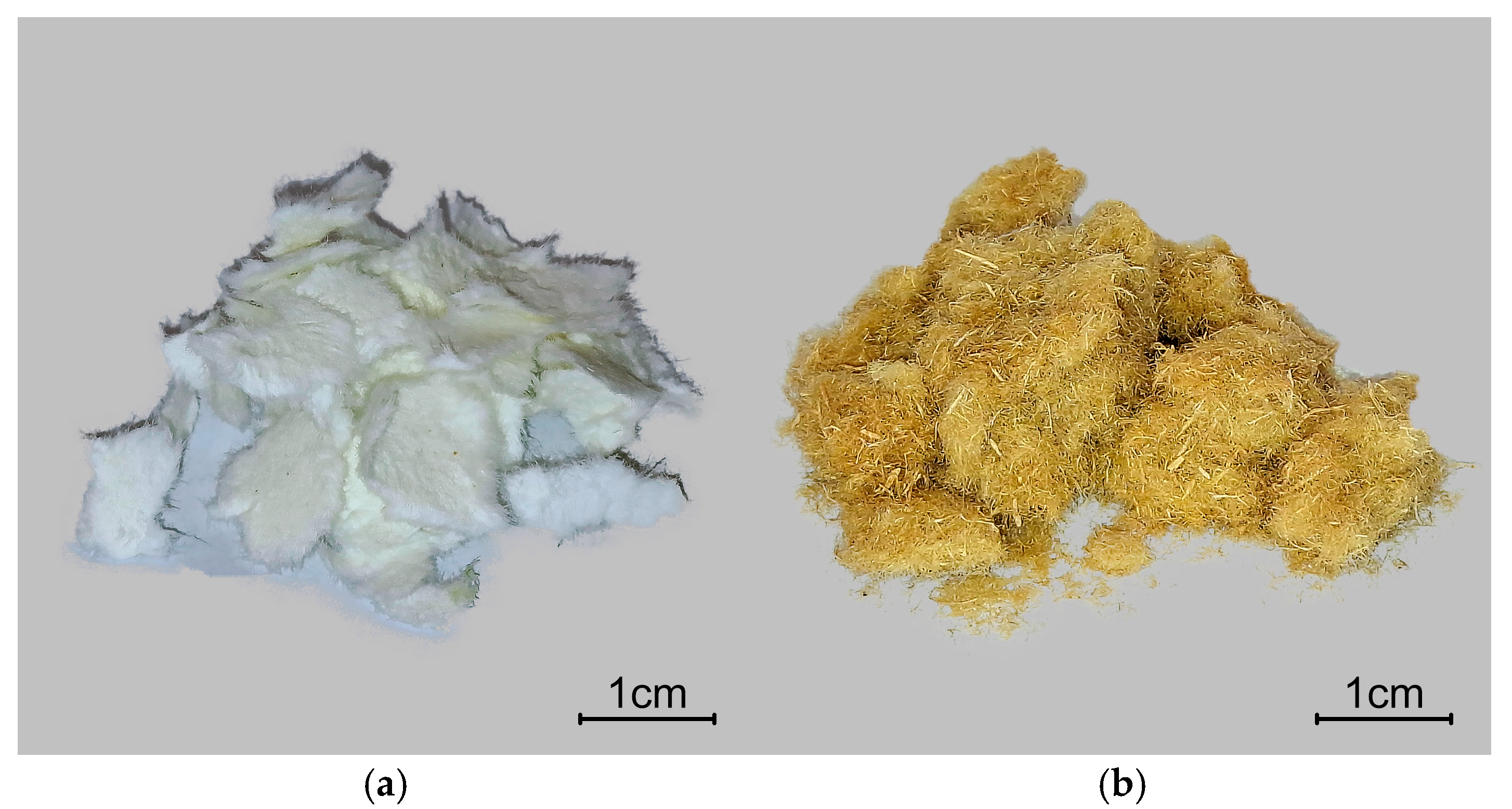

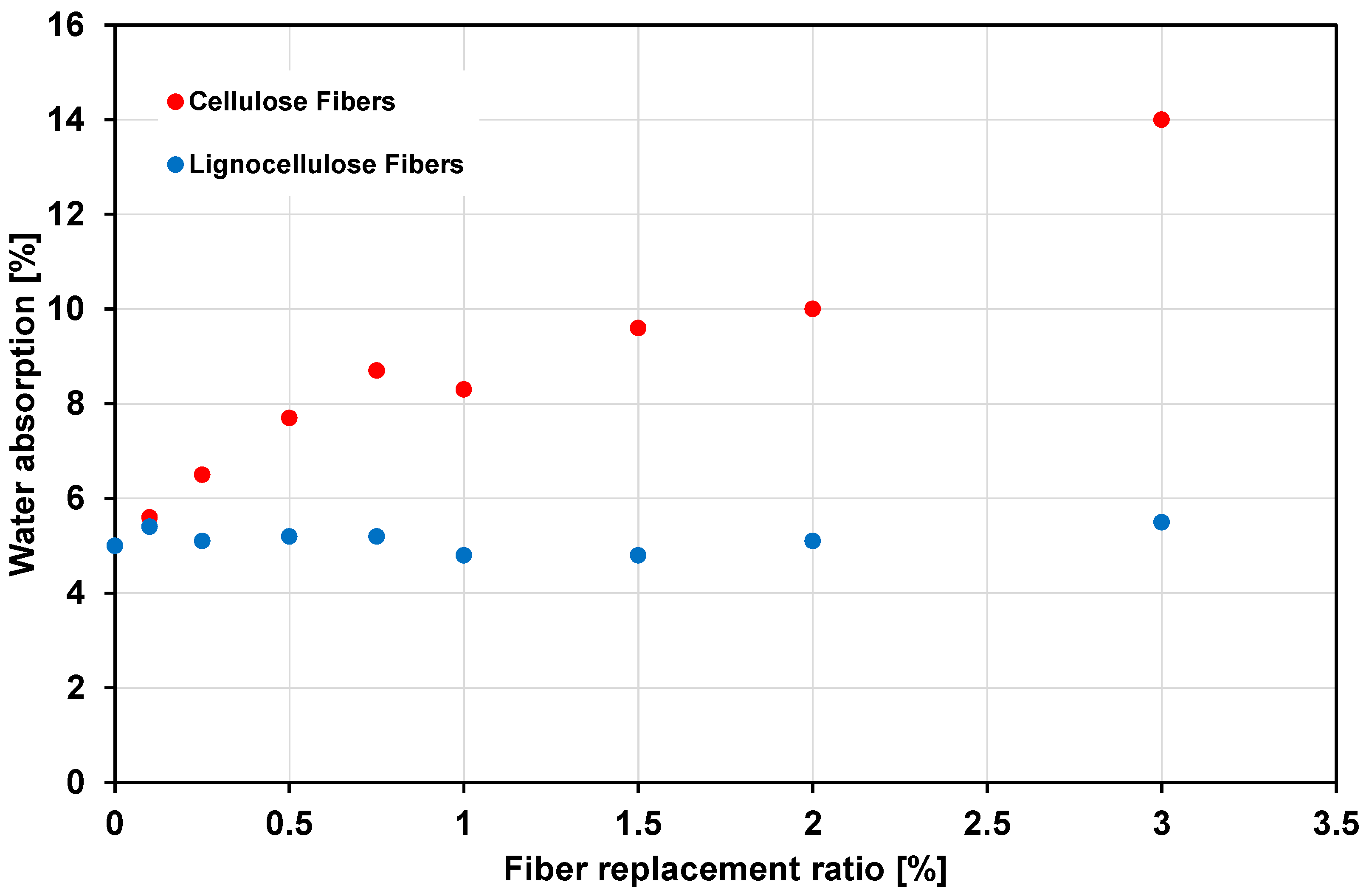


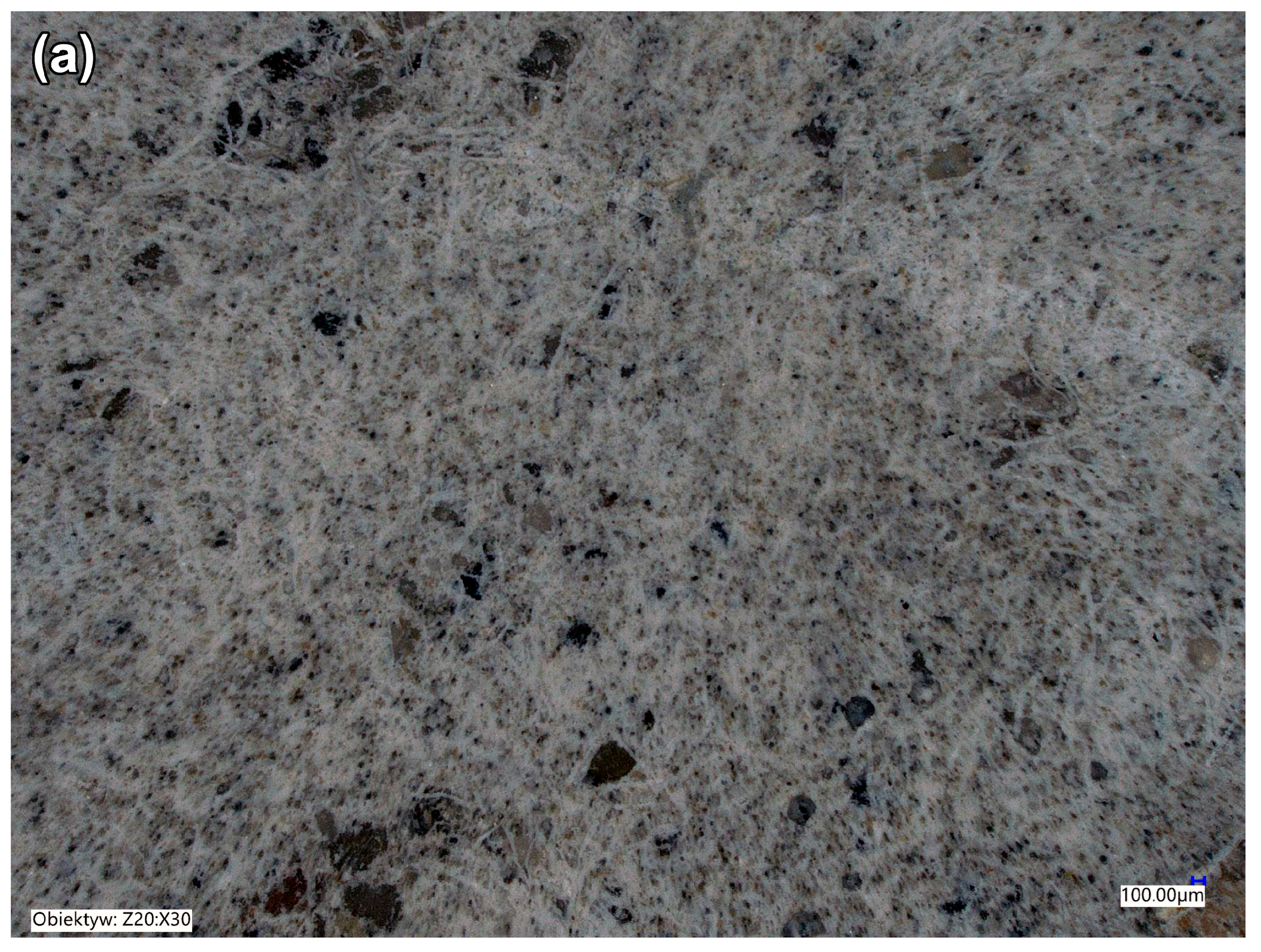
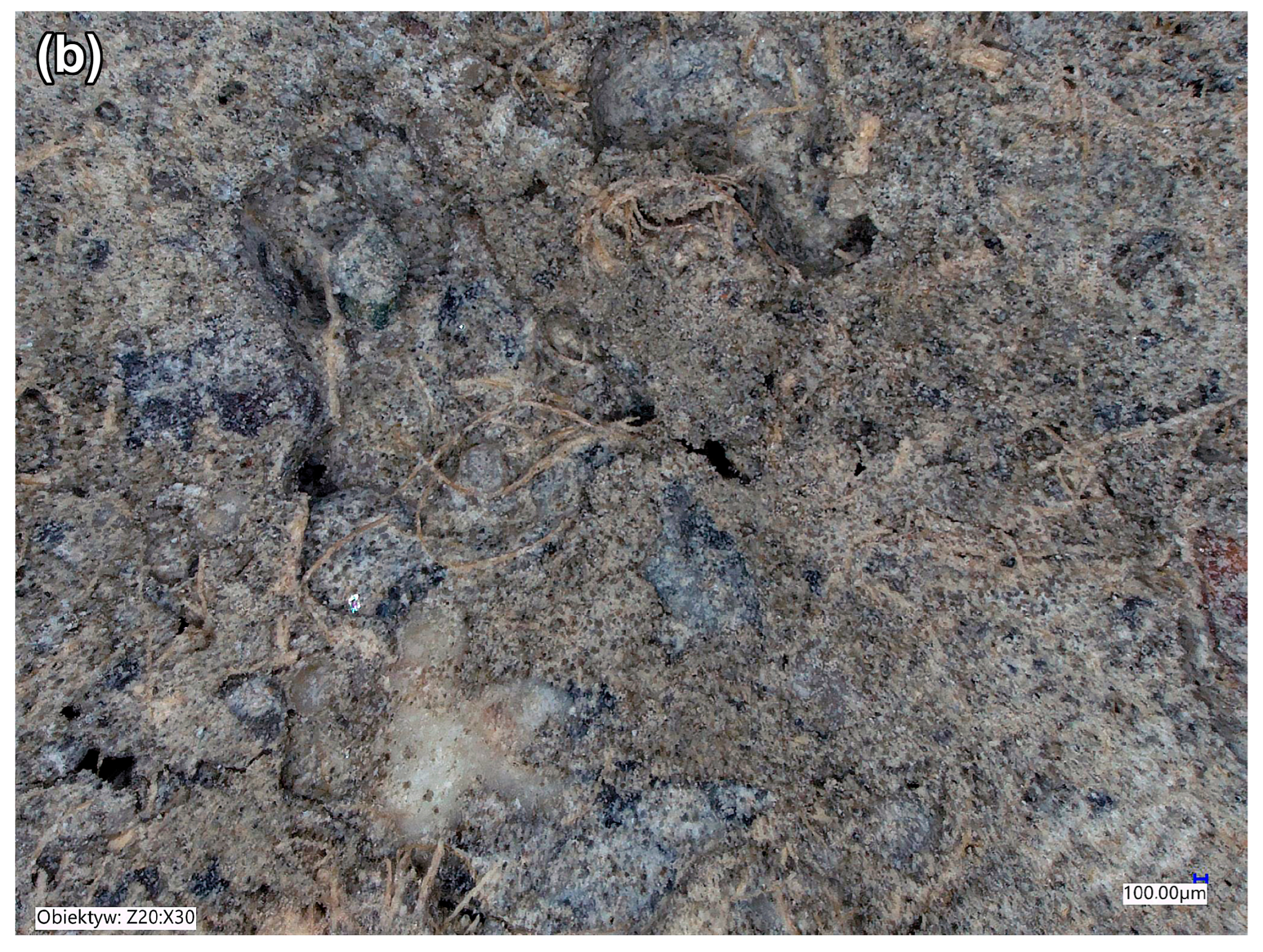

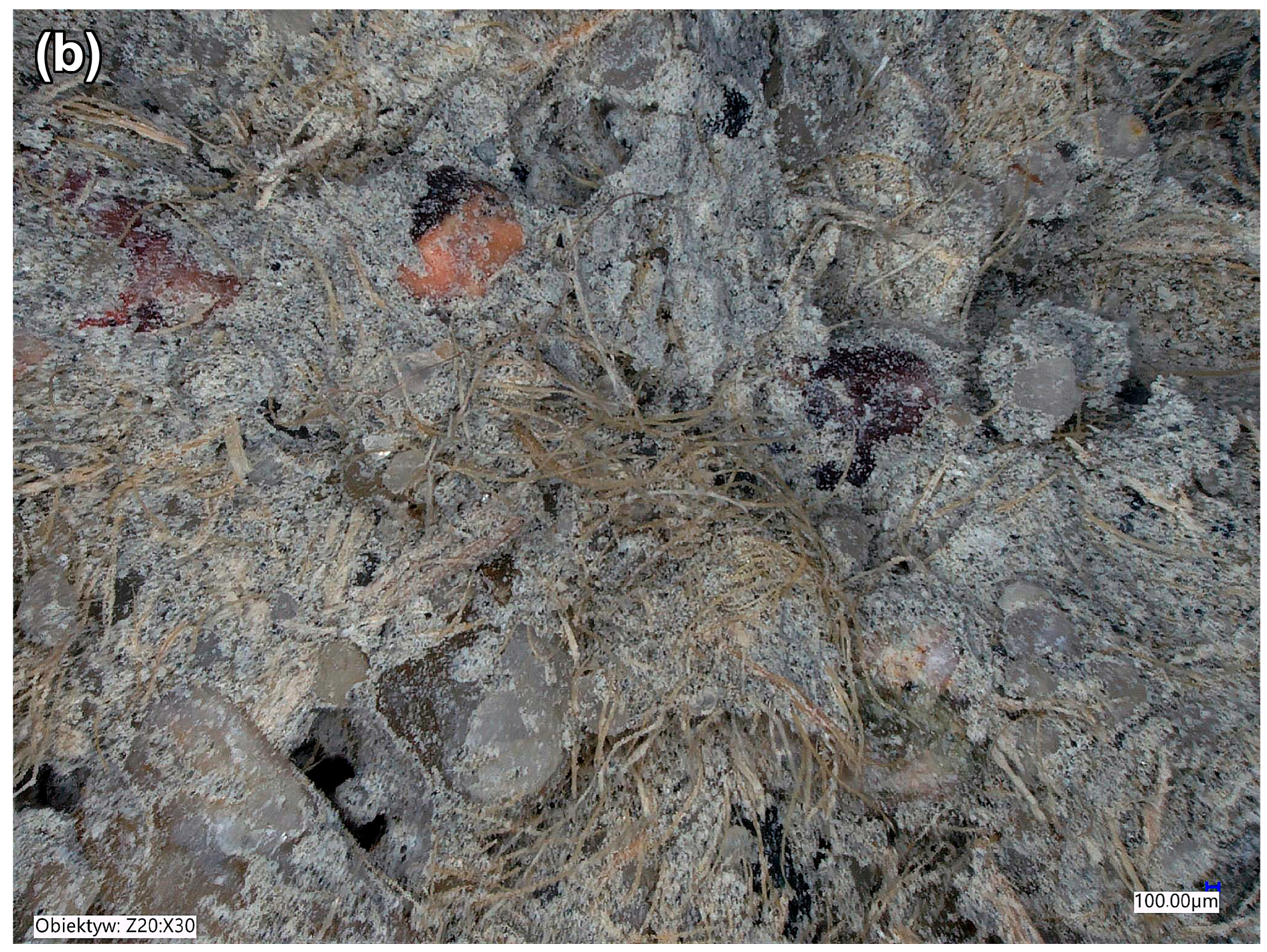
| Parameter | Cellulose Pulp | Lignocellulose Pulp |
|---|---|---|
| Dry matter content | 96.2% (0.2%) | 95.4% (0.3%) |
| Weighted average fiber length | 2031 μm (6 μm) | 1450 μm (34 μm) |
| Degree of polymerization | 960 (21) | 680 (84) |
| Cellulose content | 95.2% (0.4%) | 45.8% (1.8%) |
| Hemicellulose content | 4.1% (<0.1%) | 20.6% (2.4%) |
| Lignin content | 0.1% (<0.1%) | 27.4% (2.1%) |
| Extractives content | 0.2% (0.1%) | 3.4% (0.6%) |
| Ash (mineral) content | 0.3% (>0.1%) | 2.8% (0.5%) |
| Addition Type | Cement | Fibers | Coarse Aggregate | Sand | Water | Supplementary Water |
|---|---|---|---|---|---|---|
| None (reference) | 1.00 | 0 | 1.70 | 1.00 | 0.50 | 0 |
| Cellulose fibers | 1.00 | 2.70 × R | 1.70 × (1 − R) | 1.00 × (1 − R) | 0.50 | 9 × 2.70 × R |
| Lignocellulose fibers | 1.00 | 2.70 × R | 1.70 × (1 − R) | 1.00 × (1 − R) | 0.50 | 2.70 × R |
| Aggregates Replacement Ratio | Density | Density (% of Reference) | Compressive Strength | Comp. Strength (% of Reference) | Water Absorption |
|---|---|---|---|---|---|
| [%] | [kg/m3] | [%] | [MPa] | [%] | [%] |
| 0 | 2255.5 (17.0) | 100 | 14.04 (0.70) | 100 | 5.0 |
| 0.1 | 2220.9 (15.3) | 98 | 13.76 (0.41) | 98 | 5.6 |
| 0.25 | 2190.5 (12.3) | 97 | 13.16 (0.26) | 94 | 6.5 |
| 0.5 | 2102.0 (21.9) | 93 | 13.50 (0.45) | 96 | 7.7 |
| 0.75 | 2028.1 (3.7) | 90 | 12.98 (0.52) | 92 | 8.7 |
| 1 | 2037.7 (12.8) | 90 | 13.01 (0.79) | 93 | 8.3 |
| 1.5 | 1971.7 (14.2) | 87 | 12.64 (0.79) | 90 | 9.6 |
| 2 | 1923.2 (13.6) | 85 | 11.40 (0.23) | 81 | 10.0 |
| 3 | 1752.5 (3.3) | 78 | 8.78 (0.38) | 62 | 14.0 |
| Aggregates Replacement Ratio | Density | Density (% of Reference) | Compressive Strength | Comp. Strength (% of Reference) | Water Absorption |
|---|---|---|---|---|---|
| [%] | [kg/m3] | [%] | [MPa] | [%] | [%] |
| 0 | 2255.5 (17.0) | 100 | 14.04 (0.70) | 100 | 5.0 |
| 0.1 | 2178.9 (12.2) | 97 | 13.73 (0.30) | 98 | 5.4 |
| 0.25 | 2116.0 (4.4) | 94 | 13.31 (0.49) | 95 | 5.1 |
| 0.5 | 1992.7 (12.4) | 88 | 9.98 (0.90) | 71 | 5.2 |
| 0.75 | 1752.6 (6.3) | 78 | 4.65 (0.45) | 33 | 5.2 |
| 1 | 1688.6 (3.3) | 75 | 2.81 (0.41) | 20 | 4.8 |
| 1.5 | 1696.1 (24.2) | 75 | 2.14 (0.41) | 15 | 4.8 |
| 2 | 1740.1 (13.9) | 77 | 3.08 (0.53) | 22 | 5.1 |
| 3 | 1754.8 (9.4) | 78 | 2.63 (0.53) | 19 | 5.5 |
| Compressive Strength [MPa] | |||
|---|---|---|---|
| Sample | 7 Days | 28 Days | 60 Days |
| Reference (no addition) | 8.72 (0.64) | 13.33 (0.87) | 14.04 (0.70) |
| 0.1% cellulose fibers | 5.24 (0.56) | 11.24 (0.45) | 13.76 (0.41) |
| 3% cellulose fibers | 3.44 (0.29) | 6.92 (0.58) | 8.78 (0.38) |
| 0.1% lignocellulosic fibers | 7.45 (0.71) | 12.68 (0.43) | 13.73 (0.30) |
| 3% lignocellulosic fibers | 0.68 (0.35) * | 1.85 (0.67) | 2.63 (0.53) |
Disclaimer/Publisher’s Note: The statements, opinions and data contained in all publications are solely those of the individual author(s) and contributor(s) and not of MDPI and/or the editor(s). MDPI and/or the editor(s) disclaim responsibility for any injury to people or property resulting from any ideas, methods, instructions or products referred to in the content. |
© 2025 by the authors. Licensee MDPI, Basel, Switzerland. This article is an open access article distributed under the terms and conditions of the Creative Commons Attribution (CC BY) license (https://creativecommons.org/licenses/by/4.0/).
Share and Cite
Turoboś, P.; Przybysz, P. Comparative Study of Cement Composites Reinforced with Cellulose and Lignocellulose Fibers. Fibers 2025, 13, 128. https://doi.org/10.3390/fib13090128
Turoboś P, Przybysz P. Comparative Study of Cement Composites Reinforced with Cellulose and Lignocellulose Fibers. Fibers. 2025; 13(9):128. https://doi.org/10.3390/fib13090128
Chicago/Turabian StyleTuroboś, Piotr, and Piotr Przybysz. 2025. "Comparative Study of Cement Composites Reinforced with Cellulose and Lignocellulose Fibers" Fibers 13, no. 9: 128. https://doi.org/10.3390/fib13090128
APA StyleTuroboś, P., & Przybysz, P. (2025). Comparative Study of Cement Composites Reinforced with Cellulose and Lignocellulose Fibers. Fibers, 13(9), 128. https://doi.org/10.3390/fib13090128






